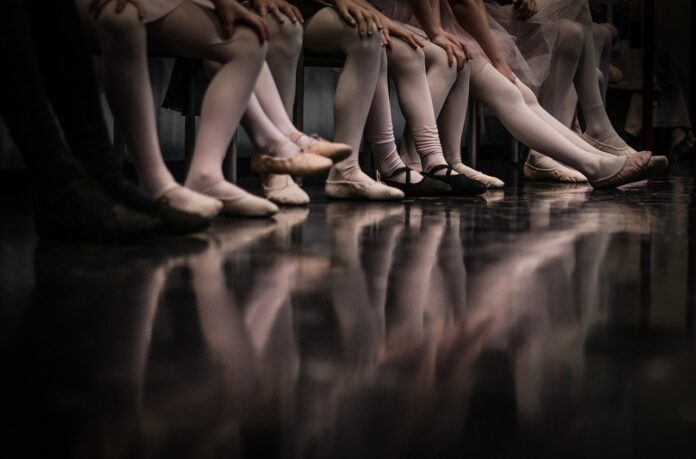In early September of this semester, I sat crisscrossed on Danya Helperin’s ‘25 Village Five living room floor and watched. I watched as she glided and melted and bent around the cold tile. Her body embraced a series of paradoxical movements: a gentle power – a complicated simplicity – an absolute stillness beside shattering vibration.
It made absolutely no technical sense to me.
Watching an early draft of her “Reset” choreography, I felt at peace with my minimal technical understanding, and was instead excited to pick it apart conceptually, exploring the patterns, the flow, the pacing. I read her dance as if it was responding to a Linda Miller-esque prompt, her piece gently and maybe even accidentally packed with literary devices just written in a different, more physical language.
Growing up seeing dance either at my local theater, the occasional Broadway visit or on the “Dance Moms” YouTube-verse, I understood dance as a vessel to entertain. The costumes were sexy, the music had been recycled from Bat Mitzvah playlists. The moves made our spines ache in amazement. It took me out of whatever middle/high school trauma came up that Sunday night and plopped me into a fantastical universe—all clean smiles and flashy legs. Performance, then, was uncomplicated.
College is complicating things. My liberal arts simulation, and most of the people inside of it, like to contort meaning and play with expectations of “normal” like it’s a sandbox. Seeing shows like “In Motion” and “Reset,” or watching Alyssa Kaplan ‘25 and Kerry Kaufmans’ ‘24 seasonal Instagram story improvisations, accomplishes a similar kind of contortion and playing. I read these pieces as more of a release, a dialogue, a journal entry. Dance here is funny, emotional and messy.
Just under a month ago, I watched “Reset” as one of the few note-takers in the audience. Looking back at my sloppy epiphanies, I’m finding phrases like “creepy smile nothing matched!!,” “Breathe blue,” “clean innocence,” “infected,” “blind trust” and “hesitant support.” These were mixed in, of course, with sloppier epiphanies like “CkntrTx contrast” or “moth in h goes together.” I note-take and reflect and ask and debrief because these dances do more than entertain. Dance is language. It speaks through patterns and flow and pacing. If you look beside the movement you can read it like a twisted picture book on satire or obsession or loss or identity. Maybe you’ll find something unexpected. Maybe you’ll find precisely what you need to find in that particular moment.
Imagine a world where Abby Lee Miller accepted dance as language before dance as entertainment. Maybe more little dancers would grow up to be sociology majors.























speak your truth maddie! it is always a pleasure to read your thoughts!